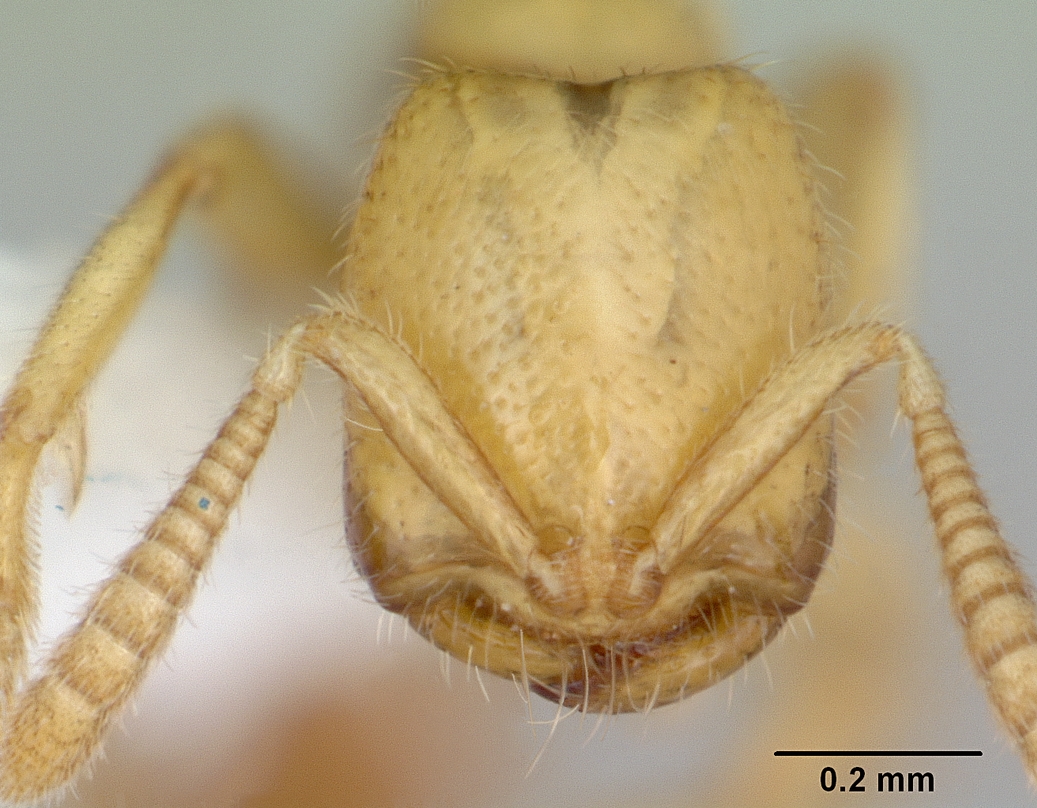Adetomyrma venatrix on:
[Wikipedia]
[Google]
[Amazon]
''Adetomyrma venatrix'', more commonly known as the Dracula ant, so named because of its grisly feeding habits of drinking the blood of its young, is an
 ''Adetomyrma venatrix'' was described on the basis of specimens belonging to the worker caste collected from Zombitse Forest, in western Madagascar. The key characteristics of the species was the absence of a clear petiole when viewed from above due to the third abdominal tergite (the sclerite on the dorsal side) lacking a differentiated pretergite. The gaster is large and without constrictions. The ant is blind and has a long sting. It was placed with reservations in the tribe Amblyoponini as it lacks the typical characters of the group. Later studies considered them as being close to the
''Adetomyrma venatrix'' was described on the basis of specimens belonging to the worker caste collected from Zombitse Forest, in western Madagascar. The key characteristics of the species was the absence of a clear petiole when viewed from above due to the third abdominal tergite (the sclerite on the dorsal side) lacking a differentiated pretergite. The gaster is large and without constrictions. The ant is blind and has a long sting. It was placed with reservations in the tribe Amblyoponini as it lacks the typical characters of the group. Later studies considered them as being close to the
endangered
An endangered species is a species that is very likely to become extinct in the near future, either worldwide or in a particular political jurisdiction. Endangered species may be at risk due to factors such as habitat loss, poaching and in ...
species of ant
Ants are eusocial insects of the family Formicidae and, along with the related wasps and bees, belong to the order Hymenoptera. Ants evolved from vespoid wasp ancestors in the Cretaceous period. More than 13,800 of an estimated total of ...
s endemic
Endemism is the state of a species being found in a single defined geographic location, such as an island, state, nation, country or other defined zone; organisms that are indigenous to a place are not endemic to it if they are also found else ...
to Madagascar
Madagascar (; mg, Madagasikara, ), officially the Republic of Madagascar ( mg, Repoblikan'i Madagasikara, links=no, ; french: République de Madagascar), is an island country in the Indian Ocean, approximately off the coast of East Africa ...
. Workers of this species are blind. The species was described as the type species
In zoological nomenclature, a type species (''species typica'') is the species name with which the name of a genus or subgenus is considered to be permanently taxonomically associated, i.e., the species that contains the biological type specime ...
of '' Adetomyrma'' in 1994, with the genus being an atypical member of its tribe
The term tribe is used in many different contexts to refer to a category of human social group. The predominant worldwide usage of the term in English is in the discipline of anthropology. This definition is contested, in part due to confli ...
.
Description
 ''Adetomyrma venatrix'' was described on the basis of specimens belonging to the worker caste collected from Zombitse Forest, in western Madagascar. The key characteristics of the species was the absence of a clear petiole when viewed from above due to the third abdominal tergite (the sclerite on the dorsal side) lacking a differentiated pretergite. The gaster is large and without constrictions. The ant is blind and has a long sting. It was placed with reservations in the tribe Amblyoponini as it lacks the typical characters of the group. Later studies considered them as being close to the
''Adetomyrma venatrix'' was described on the basis of specimens belonging to the worker caste collected from Zombitse Forest, in western Madagascar. The key characteristics of the species was the absence of a clear petiole when viewed from above due to the third abdominal tergite (the sclerite on the dorsal side) lacking a differentiated pretergite. The gaster is large and without constrictions. The ant is blind and has a long sting. It was placed with reservations in the tribe Amblyoponini as it lacks the typical characters of the group. Later studies considered them as being close to the ancestral
An ancestor, also known as a forefather, fore-elder or a forebear, is a parent or ( recursively) the parent of an antecedent (i.e., a grandparent, great-grandparent, great-great-grandparent and so forth). ''Ancestor'' is "any person from wh ...
members of the Amblyoponinae
Amblyoponinae is a subfamily of ants in the poneromorph subfamilies group containing 13 extant genera and one extinct genus. The ants in this subfamily are mostly specialized subterranean predators. Adult workers pierce the integument (non letha ...
and they share certain morphological features with '' Amblyopone pluto'' such as the presence of laterosclerite.
References
External links
* * {{Taxonbar, from=Q345486 Amblyoponinae Blind animals Insects described in 1994 Hymenoptera of Africa Endemic fauna of Madagascar Critically endangered insects